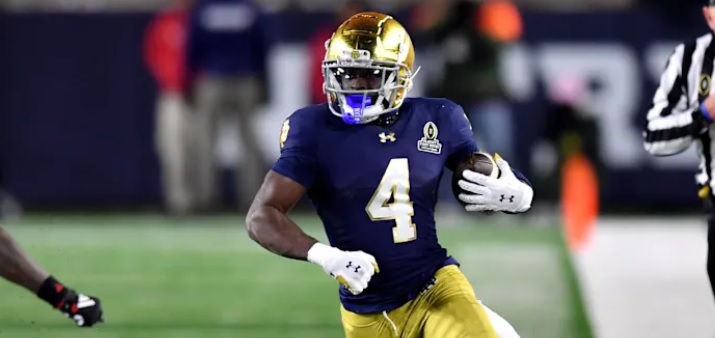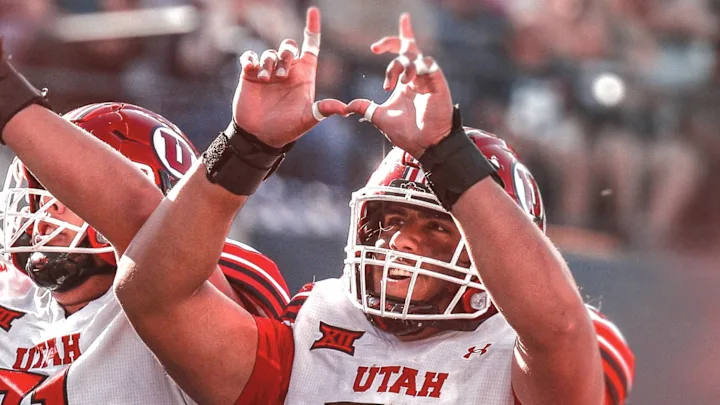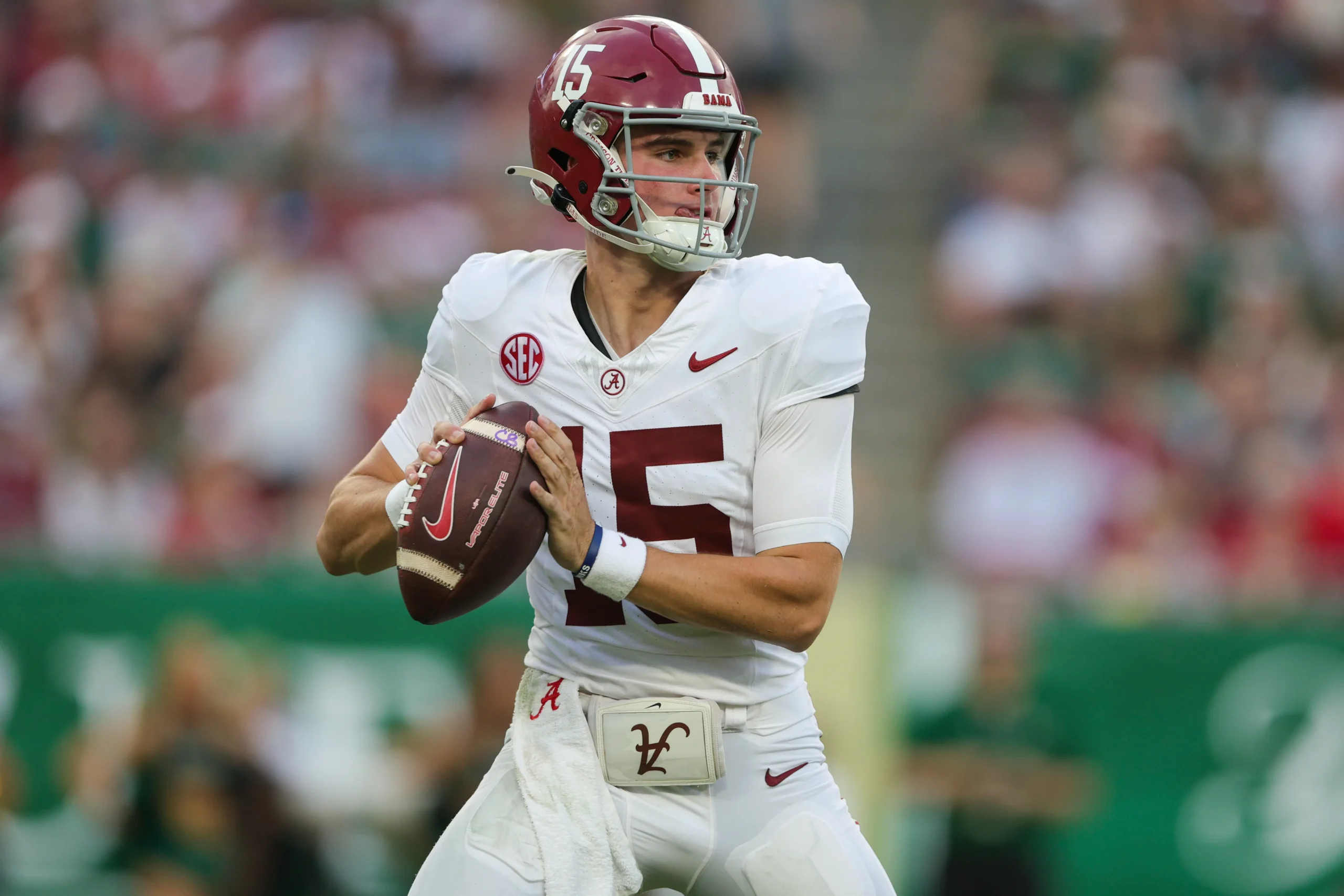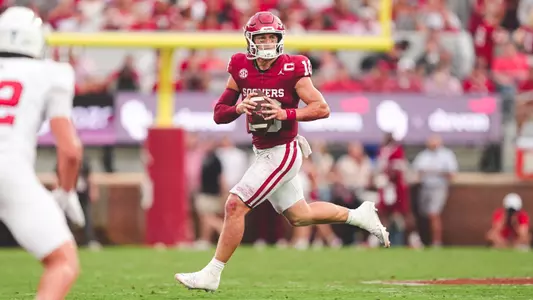By Charlie Campbell.
Send Charlie an e-mail here: [email protected]
Follow Charlie on Twitter @draftcampbell for updates.
This page was last updated March 12, 2021. Follow me @walterfootball for updates.
Position Review: Tight Ends
Tight End Class
Early-round talent: B
Mid-round: C
Late-round: D
Overall grade: C
2021 prospects vs 2020
Kyle Pitts
Cole Kmet
Pat Freiermuth
Brevin Jordan
Hunter Long
Tre’ McKitty
Devin Asiasi
Josiah Deguara
Dalton Keene
Adam Trautman
Harrison Bryant
Albert Okweugbunam
Colby Parkinson
The 2017 NFL Draft featured a great class of tight ends that received a rare A+ from me. The next year’s class was a let down, but the 2019 NFL Draft had were some good early-round talents and team sources told me they liked the depth of tight ends for the mid-rounds and Day 3.
The tight end class for the 2021 NFL Draft is just average. It is possible that only five tight ends will be taken in the first half of the 2021 NFL Draft, but the class is also led by Kyle Pitts, who is regarded as a generational talent for the position. Team sources feel Pitts is a far better tight end prospect than other recent first-round picks like T.J. Hockenson, O.J. Howard and Eric Ebron. Pitts is elite prospect the likes of which has not been seen at the tight end position in a long time.
The rest of the tight ends are solid but unspectacular. There is a large number of tight ends for the third day of the 2021 NFL Draft, although a lot of them fall into the “just a guy” category and will have a hard time sticking in the NFL.
If you were to merge the tight ends from the 2020 and 2021 NFL Drafts, it would be easy to see that tight end was one of the weakest positions in the 2020 NFL Draft. Kyle Pitts is by far the best prospect, and Cole Kmet is not even in the same ballpark. The second-day group of tight ends for the 2021 NFL Draft is similar to Kmet and better than the 2020 NFL Draft third-rounders, led by Asiasi.
Safest Pick: Kyle Pitts, Florida

Previous Picks:
2020: Adam Trautman
2019: T.J. Hockenson
2018: Hayden Hurst
2017: O.J. Howard
2016: Hunter Henry
2015: Clive Walford
2014: Eric Ebron
2013: Zach Ertz
My track record here is decent. Hockenson looks like he will be a solid tight end after an improved second season. Hurst could still turn into a good pro for Atlanta. Howard is a good player when healthy, although he has not always been utilized.
Henry has been solid and landed the franchise tag. Walford is the one big blemish thus far, as he didn’t stick with Oakland. Ebron was a disappointment as a top-10 pick for Detroit, but he has turned into a mismatch receiving tight end with the Colts. Ertz has been one of the better tight ends in the NFL.
This was an easy choice, as Pitts is one of the most dynamic draft prospects to enter the NFL in the last decade. As a receiver, Pitts is a once-in-a-decade-caliber prospect who is a mismatch nightmare similar to a Travis Kelce or Calvin Johnson. Pitts can play X – split end – receiver, Z – slot – receiver, traditional tight end and F – movement – tight end. He is a mismatch nightmare with the speed to create separation and the size to make leaping contested catches. Pitts is a willing blocker as well. Teams rave about Pitts’ intangibles, saying he is a great teammate, a harder worker, an intelligent student of the game and a nice guy six days a week and a focused competitor on game day. Pitts is a complete package to be a potential star in the NFL.
Biggest Bust Potential: Hunter Long, Boston College

Previous Picks:
2020: Hunter Bryant
2019: Noah Fant
2018: Jordan Akins
2017: Adam Shaheen
2016: Nick Vannett
2015: Nick O’Leary
2014: Jace Amaro
2013: Gavin Escobar
My track record here is pretty good. One can’t pass judgement on Fant or Bryant yet. Akins has been a disappoint thus far, but he has time to reverse that. Shaheen was a bust for the Bears. Vannett hasn’t impressed. O’Leary was a sixth-round pick, so you can’t say call him a true bust even though he didn’t stick with the Bills. Amaro was a bust for the Jets, and Escobar was a bust as a second-round pick for Dallas because he never came close to his draft slot, so I was right on those two.
Long has a shot at being a second-round pick, and I think that could be a reach. Long had issues separating from coverage in college, and the NFL will only compound that. He is not fast and lacks the speed to run by defensive backs or outside linebackers. As a blocker, Long has room for improvement for the NFL, but the skill set is there for him to develop into a good blocker in time. I could see Long being limited to being a No. 2 or 3 tight end and end up being a disappointment as a second-day pick who is expected to become a starter.
Tight End Rankings by Attributes
Pass Receiving:
NFL prototype: Travis Kelce, Chiefs
- Kyle Pitts
- Tre’ McKitty
- Brevin Jordan
- Pat Freiermuth
- Hunter Long
Recap: The NFL has evolved to the point where tight ends are a critical part of a potent passing attack. Some teams have better receiving weapons at tight end than they do at wide receiver. The league is driven by passing, so if a tight end can’t contribute as a receiver, they could have a hard time seeing the field. The 2021 NFL Draft class has some tight ends who can do damage as receivers.
Many scouts feel Pitts is the best receiving weapon in the 2021 NFL Draft, including top wide receivers Ja’Marr Chase, Devonta Smith,and Jaylen Waddle. Not only is Pitts quick to find openings downfield, but he is a smooth mover who glides through the defense and is able to generate separation from his route-running as well. He has shocking change-of-direction skills with a burst out of his breaks that takes defensive backs by surprise and creates separation. Pitts displays impressive suddenness and explosiveness for a tight end, and he really moves like a big wide receiver. Pitts runs excellent routes and is adept at finding the soft spot in zone coverage. He tracks the ball very well and shows impressive hands to snatch passes out of the air. With his amazing skill set and intangibles, Pitts could become an elite receiving tight end similar to Travis Kelce or Darren Waller.
McKitty is a solid receiving tight end who could be a valuable contributor and a mismatch problem for defenses. He is a good athlete with speed to generate separation from coverage. McKitty has a nice burst out of his breaks to create space from defenders and get open for his quarterback. McKitty shows nice twitch for a tight end of his size and second-gear quickness. He does a nice job of working the middle seam and slants, and he is capable along the sideline. With his surprising speed, McKitty can challenge defenses vertically from running down the seam or along the sideline.
As a receiver, Jordan is a smooth route-runner with the quickness to separate. He glides through the secondary and is able to use his athleticism and speed to get open for his quarterback. Jordan has enough agility and burst to separate from defenders coming out of breaks. Along with good route-running, Jordan has reliable hands, showing the ability to control the ball with his hands or by using the body. He displays significant concentration and toughness, so he is not afraid of contact, and he makes sure to secure catches while knowing a hard hit is soon to follow. Jordan is a quality underneath receiver with enough speed and size to be a valuable weapon down the seam.
Freiermuth has the potential to contribute to a NFL passing attack as a receiver, but he lacks elite speed to separate or twitchy athleticism. He can contribute by finding soft spots in zone coverage and making catches over defenders, but he will struggle to create separation from man coverage against pro safeties and linebackers. Freiermuth has mismatch size and is very adept at going up to make contested catches over defenders. He high points the ball well and displays strong hands to control the ball while getting hit. Freiermuth has a nose for the end zone and should be an asset in the red zone, where he was very good at producing touchdowns for Penn State.
Long has good size for the passing game and does an excellent job of winning contested catches. He uses his build to wall off defenders via skilled body control and awareness to put himself in between the ball and coverage. Long possesses soft, reliable hands and good concentration to secure the catch while defenders are initiating contact. Long showed issues separating from coverage in college, and that will only get worse in the NFL. He is not fast and lacks the speed to run by defensive backs or outside linebacker. Long is also not sudden or explosive with his route-running, so he is rated behind the other tight ends.
Blocking:
NFL prototype: Marcedes Lewis, Packers
- Hunter Long
- Pat Freiermuth
- Tre’ McKitty
- Kyle Pitts
- Brevin Jordan
Recap: Blocking ability is still important for NFL tight ends; not just in the ground game, but in pass protection. Teams like their tight ends to have the ability to help offensive tackles when they’re going against an elite edge-rusher and contribute to helping cover up tacklers in the rushing attack. In this group, there isn’t one player who is an elite blocker, but none of them is terrible either.
Long (6-5, 253) has the potential to be effective, but he needs to get more stronger to pack more of a punch and sustain his blocks. Long makes a solid effort, but for taking on NFL edge rushers and outside linebackers, he will need to fill out his frame with more power to engage them.
Freiermuth has the size to be effective, but he needs to grow more physical and show more strength to engage defenders. NFL coaching could help him to get better with his technique and definitely could employ the motivational tools for Freiermuth to develop a more aggressive demeanor.
As a blocker, McKitty contributes and willing to throw his body into defenders. He could stand to get stronger to sustain his blocks and improve his hand placement to tie up defenders rather just throwing his torso into them. McKitty blocks, but getting more aggressive in this phase would help him at the pro level.
While Pitts is not a great blocker, he is not bad and definitely contributes. Pitts fights and gives a good effort. Not having the desire to block is a common issue for receiving tight ends, but Pitts does not fall into the trap. While he is not a forceful blocker, Pitts is willing and does not take plays off.
As a blocker, Jordan has room for improvement for the NFL. He should add strength because he can struggle to sustain blocks. Jordan shows a willingness to block, but he lacks size for taking on NFL edge defenders. The lack of blocking size and ability might lead to him being more of rotational player who is a F – movement – tight end rather than a three-down starter. While Jordan will never be an impactful blocker, he should be able to improve enough to contribute somewhat in the ground game and help protect his quarterback.
Red Zone:
NFL prototype: Darren Waller, Raiders
- Kyle Pitts
- Pat Freiermuth
- Tre’ McKitty
- Hunter Long
- Brevin Jordan
Recap: Tight ends are critical players in the red zone. Multiple tight ends are needed for goal-line packages. Many teams also like to use double-tight end sets inside the 20-yard line. A tight end who is a big target with sure hands and leaping ability is a good weapon to help produce touchdowns instead of field goals.
Pitts is a tremendous weapon in the red zone with his size-mismatch ability and will make life very difficult on defenses. He can split out wide and dominate man coverage with his size and speed, and if he sees a double team, that will produce good numbers for the rushing attack. On 50-50 passes, Pitts is an amazing weapon, and he is never really covered because of his ability to make acrobatic grabs over defenders. Pitts uses his tall and long frame to make catches over defensive backs, and he is so quick and sudden that he can get open on short routes for touchdowns. Pitts notched 19 touchdowns over his final two years as a Gator, and that was despite missing some time and Florida also having many other good receivers to utilize. Pitts had a four-touchdown game and a three-touchdown game in 2021, which illustrate how dynamic he is in the red zone.
Freiermuth has mismatch size and is very adept at going up to make contested catches over defenders. He high points the ball well and has strong hands to control the ball while getting hit. Freiermuth has a nose for the end zone and should be an asset in the red zone because he was very good at producing touchdowns in college, totalinf 15 scores over two full seasons – 2018 and 2019.
In the NFL, McKitty should be a valuable player in the red zone thanks to his receiving ability. He can get open and has the size to make catches over defensive backs in jump-ball situations.
Jordan is not overwhelmingly big, but he does have the ability to get open and totaled 15 touchdowns over three seasons. Jordan could be a red-zone contributor in the NFL because he is willing to make leaping grabs despite contact bearing down on him.
Long could be a red-zone contributor because he has the size to make catches over defensive backs, but he won’t be a candidate to get open through speed and suddenness.
Hands:
NFL prototype: Jason Witten, Retired
- Kyle Pitts
- Pat Freiermuth
- Brevin Jordan
- Hunter Long
- Tre’ McKitty
Recap: Tight ends with bad hands don’t get thrown the ball often in the NFL. They have a hard time seeing the field and end up only playing in goal-line situations and on special teams. In the group above, there isn’t a player who I would say has bad hands.
Pitts has the best hands of this group and is natural hands catcher. I think Freiermuth is very sure-handed and dependable. Jordan displays really soft hands and is a natural hands catcher. Long and McKitty were reliable.
H-Back:
NFL prototype: Jared Cook, Saints
- Brevin Jordan
- Kyle Pitts
- Tre’ McKitty
- Pat Freiermuth
- Hunter Long
Recap: Many offensive coordinators like tight ends with the flexibility to line up as an h-back. That allows them to set up more mismatches and align blocking schemes differently. Not all tight ends have the athletic ability and quickness to pull off h-back responsibilities. Aaron Hernandez was superb at it for New England and was the prototype a few years ago.
Jordan projects as the best h-back tight end of this group, and he was moved around at Miami. He has the build to go with the quickness and athleticism of an h-back. Pitts is longer than most players who play h-back, but he is such a dynamic athlete who he could execute out of the h-back spot and provide huge mismatches in that role with one-on-one routes versus linebackers. McKitty is similar in that he would be a big h-back, but he has enough quickness and athletic ability to execute the role. Freiermuth and Long don’t look like fits for h-back. They don’t have the quick-twitch athleticism and speed necessary to execute the position.
Yards After Catch:
NFL prototype: Ron Gronkowski, Buccaneers
- Kyle Pitts
- Pat Freiermuth
- Tre’ McKitty
- Brevin Jordan
- Hunter Long
Recap: There are some tight ends in the NFL who are very dangerous with the ball in their hands. Having the ability to pick up yards after the catch (YAC) is not an easy trait to find in tight ends. This class has some amazing yards-after-the-catch tight ends.
Pitts is dangerous with the ball in his hands. After the catch, his speed and agility allow him to pick up good yardage, and he had some superb runs after the catch as a sophomore and junior. Pitts gets North-South and shows open-field speed to run away from defenders – see his 71-yard touchdown versus Ole Miss. In the NFL, he is going to be a valuable receiver to hit on the run and let him make plays with the ball in his hands.
Perhaps Freiermuth’s most distinctive positive trait is his physicality as a runner after the catch. He is vicious with the ball in his hands and really punishes defensive backs downfield. He has good size and a strong build to flat out run over defenders and also features a powerful stiff arm to push tacklers away. Freiermuth is dangerous after the catch and provides some energy to his team with his intimidating runs through secondaries.
After the catch, McKitty shows nice running ability to dart downfield and uses his strength to power through defensive backs to finish runs well with some extra yardage after contact.
Jordan has a compact build that allows him to run through tackles and makes it tough for defensive backs to get him to the ground. He runs the ball aggressively and will pick up yards after contact while showing the athleticism to leap over tacklers as well.
Long is a physical runner who can break some tackles, but he is not quick, so defenders will chase him down easily. Thus, he may not be a big yards-after-the-catch tight end in the NFL.
NFL Picks - Nov. 16
2026 NFL Mock Draft - Nov. 12
NFL Power Rankings - Nov. 11
Fantasy Football Rankings - Sept. 1




